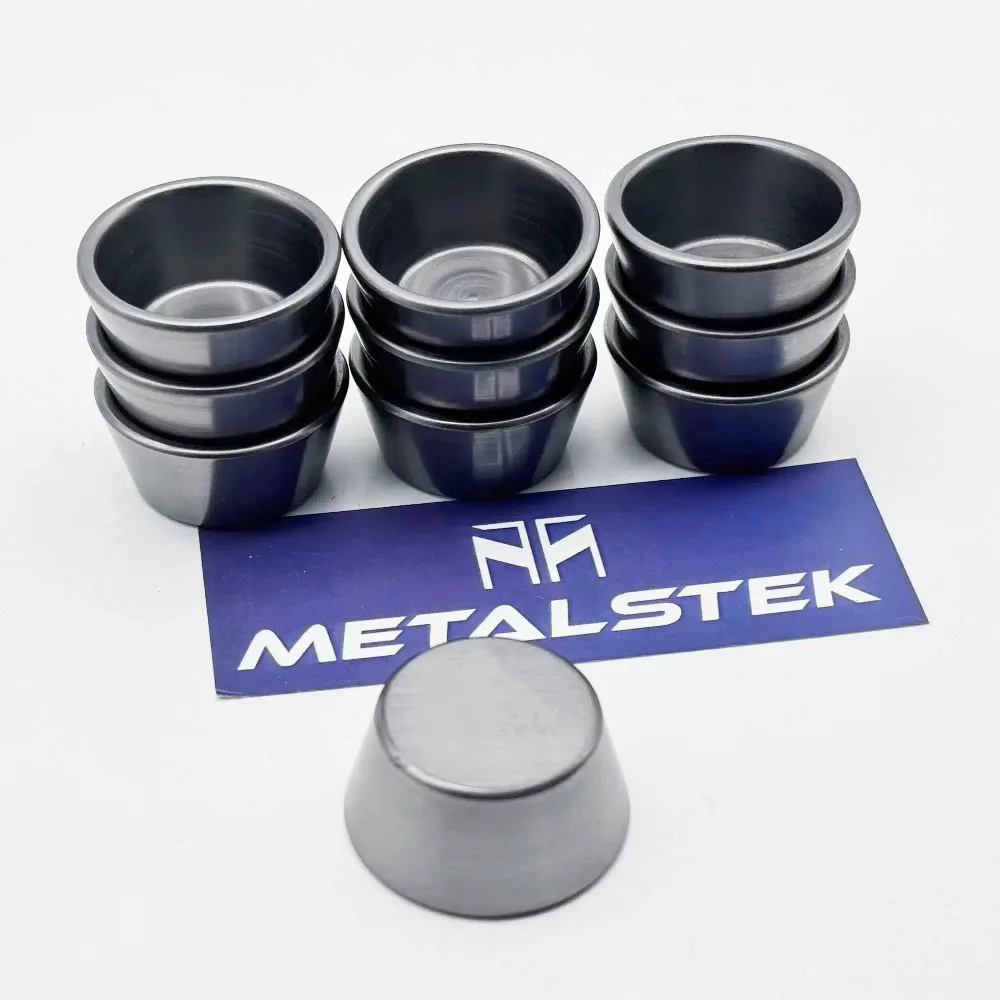
In the world of high-vacuum deposition, where consistency, temperature resistance, and purity define success, the graphite crucible quietly plays a critical role. Often overlooked, this essential component can be the make-or-break factor in the reliability and yield of electron beam physical vapor deposition (EBPVD) systems. Whether you’re working in semiconductor fabrication, optical coating, or materials R&D, understanding graphite e-beam crucibles can save you both time and money.
In this article, we’ll break down what graphite e-beam crucibles are, why they’re widely used, how long they last, and how to extend their life for maximum efficiency.
What is a Graphite E-Beam Crucible?
A graphite e-beam crucible is a specially designed container made from high-purity graphite, used to hold source materials during electron beam evaporation in physical vapor deposition systems. The e-beam heats the target material in the crucible until it evaporates, depositing a thin film onto the substrate.
In this process, the crucible isn’t just a container—it’s a performance-critical component. It must tolerate extreme localized heat, conduct energy efficiently, and remain chemically stable without contaminating the material being deposited.
Basic Features and Properties of Graphite E-Beam Crucibles
Graphite crucibles used in e-beam applications are engineered to deliver performance under extreme heat and vacuum. Here are their essential characteristics:
- Material: Isostatically pressed or machined high-purity graphite
- Purity: Often ≥99.99% to minimize contamination
- Density: 1.75–1.85 g/cm³
- Thermal Conductivity: ~100–120 W/m·K, excellent for even heating
- Thermal Expansion Coefficient: 4–5 × 10⁻⁶/K
- Operating Temp: Up to 3000°C in vacuum/inert gas; 500–700°C in air
- Chemical Resistance: Excellent in vacuum; oxidizes in air above ~400°C
- Machinability: Easily customized for complex geometries and OEM setups
Why Graphite for E-Beam Crucibles?
Graphite is uniquely suited for e-beam evaporation for a few key reasons:
- High Thermal Shock Resistance: Ideal for rapid heating and cooling cycles
- Superior Machinability: Easily shaped to fit specific chamber designs
- Affordable Compared to Tungsten or Molybdenum: Reduces cost per run
- Compatibility: Can be used with a wide range of metals, oxides, and compounds
- Non-Wetting Surface: Many materials do not stick, allowing easy release and cleaning

How Hot Can a Graphite Crucible Get?
Graphite crucibles can operate at extreme temperatures, which makes them perfect for e-beam systems:
- Up to 3000°C in vacuum or inert gas conditions
- Only 500–700°C in open air due to oxidation risk
They’re excellent for evaporating refractory metals, metal oxides, and other high-melting-point materials like tungsten, alumina, and titanium dioxide.
How Long Does a Graphite Crucible Last in E-Beam Applications?
In typical e-beam systems, graphite crucibles can last anywhere from 20 to over 100 evaporation cycles, depending on:
- Temperature of use
- Nature of evaporated material (corrosive/reactive or not)
- Handling and mounting quality
- Thermal cycling frequency
- Vacuum quality and cleanliness
If properly cared for and used under optimal vacuum, a graphite crucible may last several months in regular lab or production use.
How to Extend Crucible Life
Here are a few simple but effective ways to maximize the service life of your graphite crucibles:
- Use Crucible Liners: Especially with sticky or corrosive materials
- Avoid Open-Air Use: Oxygen leads to fast degradation
- Preheat Slowly: Prevents cracking from thermal shock
- Store in Dry Conditions: Absorbed moisture can degrade performance
- Clean Gently: Avoid abrasive tools that scratch and weaken the surface
Graphite vs. Other Crucible Materials
| Property | Graphite | Tungsten | Molybdenum | Alumina |
|---|---|---|---|---|
| Max Temperature (°C) | ~3000 | ~3422 | ~2620 | ~1700 |
| Cost | Low | High | Moderate | Low |
| Thermal Shock Resistance | Excellent | Fair | Good | Poor |
| Oxidation Risk in Air | High | Low | Moderate | Low |
| Machinability | High | Low | Low | Low |
Graphite is the most versatile and cost-effective option in controlled environments, especially when you need fast turnarounds and frequent changeovers.
Applications of Graphite E-Beam Crucibles
MetalsTek graphite e-beam crucibles are trusted in industries including:
- Semiconductor wafer processing
- Optical coatings for lenses, filters, and displays
- Solar panel thin film layers
- High-purity materials R&D
- Aerospace component coatings
They are compatible with many target materials: metals, oxides, fluorides, carbides, and more.
When to Replace a Graphite E-Beam Crucible
It’s time to replace your crucible when you observe:
- Surface pitting or flaking
- Cracks or distortion
- Residue build-up affecting deposition quality
- Reduced deposition rate or poor film uniformity
Routine inspection before each cycle helps catch issues early and prevent failed runs.
Why Choose MetalsTek Graphite Crucibles?
At MetalsTek, we don’t just sell crucibles—we engineer them to fit your system and material needs. Benefits of choosing us include:
- High-purity custom crucibles with fast turnaround
- OEM machining to fit your e-beam source geometry
- Bulk pricing and fast shipping for repeat buyers
- Support for complex materials and multi-layer evaporations
Whether you need a single prototype run or steady supply for production, we’re your dependable partner.
Conclusion
Graphite e-beam crucibles are a cost-effective, high-performance solution for PVD systems across industries. They offer excellent thermal characteristics, high temperature capability, and long service life—when used correctly. Understanding their properties and practicing good maintenance allows you to stretch your investment and achieve high-quality coatings every time.
Need Custom Graphite Crucibles for Your E-Beam System?
Email us at sales@metalstek.com
or visit www.metalstek.com to get a quote today.
